Do Metal Spinal Implants Lure Lightning?
Does a metal implant turn a person into a living lightning-conductor or radio receiver, is eye-size important, why is frost bad for freezers, where did the first organic molecules come from, what happens to sparkling drinks in space and why does a bump on the head make you see stars? This week, join Chris, Sarah and Dave as they pit their wits against the latest crop of your top questions. Plus, why making new computer chips looks set to become easy PC, how stem cells can get to the heart of Long QT Syndrome, feeding the world in 2050 and a new musical device to keep the drummer in the driving seat...
In this episode
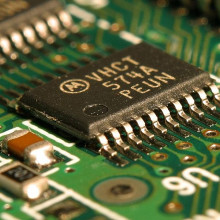
02:01 - Maskless chips
Maskless chips
A quicker cheaper way of making computer chips has been developed.
Integrated circuits, or silicon chips are now an absolutely critical part of our everyday life they are so cheap that it can make sense to put a computer into a juggling ball, but they are only cheap if they are made by the million, so most problems are solved with general purpose processors. These are great but they can be hundreds of times slower and less power efficient than custom circuits.
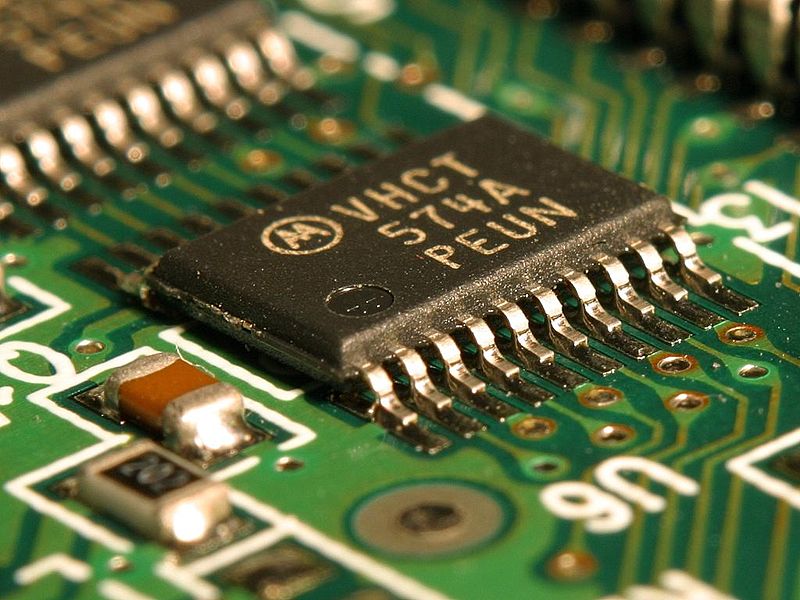 You make a silicon chip by making a mask with a pattern on it, then using UV light, photographically transferring this pattern onto a layer of plastic the chip and then etching away some of the silicon where the plastic has been removed. Different materials are added onto the silicon and then etched away up to 30 times, and you end up with a working chip. The problem is that the masks, a set can cost up to $3 million which means that if you only want a few thousand chips they cost a complete fortune, plus of course if you make a mistake in making the mask it is very very expensive.
You make a silicon chip by making a mask with a pattern on it, then using UV light, photographically transferring this pattern onto a layer of plastic the chip and then etching away some of the silicon where the plastic has been removed. Different materials are added onto the silicon and then etched away up to 30 times, and you end up with a working chip. The problem is that the masks, a set can cost up to $3 million which means that if you only want a few thousand chips they cost a complete fortune, plus of course if you make a mistake in making the mask it is very very expensive.
One alternative that has existed for a long time is to get rid of the mask completely and use an electron beam to write directly onto the plastic, but this is very very slow as there can be a billion transistors on a modern chip. Engineers working for KLA-Tencor have developed a system which instead of using one beam uses up to a million at once. They send a beam of electrons at a special chip covered in pixels that can be programmed to be transparent or act as a mirror to these electrons. They then focus the reflected beams onto the plastic on the silicon. They then move the beam around and paint the whole chip. They are aiming to be able to make a whole 15inch wafer in less than 10 mins.
This is unlikely to compete with photolithography for large quantitity production but for research and specialist applications such as the military it could be very economic.
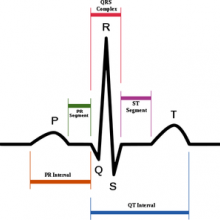
04:34 - Stem cell help for Long QT
Stem cell help for Long QT
Sufferers of a heart condition that runs in families and can cause sudden cardiac death, especially amongst the young, could look forward to new treatments for the disease thanks to a novel stem cell technique announced this week.
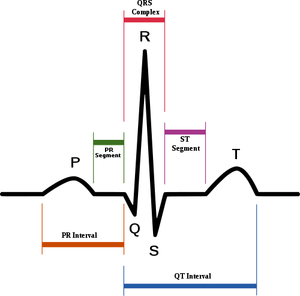 The disease, known as long QT syndrome (LQTS), leads to a delay in the rate at which heart cells electrically reset themselves between each beat. This can cause the heat beat to become irregular, especially when the heart is under heavy load, and places carriers of the condition at risk of potentially fatal cardiac arrest. But studying the condition, which is caused by abnormalities in a number of different genes, is difficult because it is hard to recreate a model heart cell to study in order to understand the underlying abnormalities. Similarly, without a model cell, it's also much more challenging to develop drugs to alleviate the problem, or identify drugs that actually exacerbate or trigger the disease.
The disease, known as long QT syndrome (LQTS), leads to a delay in the rate at which heart cells electrically reset themselves between each beat. This can cause the heat beat to become irregular, especially when the heart is under heavy load, and places carriers of the condition at risk of potentially fatal cardiac arrest. But studying the condition, which is caused by abnormalities in a number of different genes, is difficult because it is hard to recreate a model heart cell to study in order to understand the underlying abnormalities. Similarly, without a model cell, it's also much more challenging to develop drugs to alleviate the problem, or identify drugs that actually exacerbate or trigger the disease.
But now Ilanit Itzhaki, who's based at Israel's Institute of Technology in Haifa, has successfully used stem cell technology to culture long QT syndrome cells in a dish so that they can be studied. The work, which is published in Nature, involved first collecting a small number of skin cells called fibroblasts from a patient with one form of LQTS.
Next, a virus was used to add to the cells three genes, called SOX2, KLF4 and OCT4, which caused them to "un-specialise" and become so-called IPSCs - induced pluripotent stem cells, resembling the cells found in an early human embryo. When these cells were grown in a culture dish they then began to transform themselves into many of the different cell types found as an embryo develops, including cells that naturally began to beat like embryonic heart cells.
Studying these cells further revealed that they looked and behaved, both chemically and electrically, like early heart cells. Critically, they also showed electrical abnormalities identical to those seen in adults with LQTS.
Isolating these cells, it was then possible to test them against a range of drugs known to aggravate or ameliorate LQTS to see how these agents were impacting on the electrical behaviour of the cells.
This means that, for the first time, it is possible to produce model cells directly from an affected patient in order to test possible therapies and also to rationally develop novel drugs in vitro. The same approach could also be used to learn more about a range of different diseases, not just heart conditions.
As Itzhaki points out, "The concepts described may also be extended to model several other human genetic disorders, enabling translational research into disease mechanisms and therapies."

08:41 - Can we feed the world in 2050?
Can we feed the world in 2050?
Sarah - The problem of how we might feed the earth's population in the future has come under further scrutiny this week with the publication of Agrimonde - a book that is the summation of two years of work by two French institutions - INRA, the French National Institute of Agricultural Research, and CIRAD, which carries out agricultural research to help developing countries. Despite the study being carried out by two French Institutions, the book has been published in English, in order for the results to be more accessible on the world stage. I travelled to Paris for the launch of the study and spoke to Patrick Caron from the institution CIRAD about how even today we struggle to feed everyone on Earth...
 Patrick - There is a very big problem - we're used to finding food in the supermarket and having money in our pockets to pay for that food. But that's not the case in all countries, and not even the case in our own country sometimes. We have to remember that 1 billion people in thwe world are suffering from what is unacceptable. one death from malnutrition is one death that should not be accepted for ethical reasons. human history has been paved with this problem, and starvation has always been part of our history, but in the 1970s we discovered a tremendous growth in population at the world level.
Patrick - There is a very big problem - we're used to finding food in the supermarket and having money in our pockets to pay for that food. But that's not the case in all countries, and not even the case in our own country sometimes. We have to remember that 1 billion people in thwe world are suffering from what is unacceptable. one death from malnutrition is one death that should not be accepted for ethical reasons. human history has been paved with this problem, and starvation has always been part of our history, but in the 1970s we discovered a tremendous growth in population at the world level.
Sarah - And it's the continued increase of this population growth - predicted to reach 9 billion people by 2050 - that is causing concern. Now, concern about feeding the growing population isn't new, but this is the first study to integrate looking at patterns of food production and consumption over the past forty years, with two possible scenarios for how we might proceed with providing the world with food in the future. The first they called Agrimonde 1. In this scenario, the world is characterised by sustainability - so a decrease in both undernourishment and overconsumption, ecological intensification of farming, and security of trade. The second scenario, called Agrimonde GO, is kind of the 'business as usual' scenario, where food production increases year on year as it has done in the last 40 years, trade is liberal, and little thought is given to environmental impact of feeding the world. Agrimonde 1 would involve a lot of changes, not just with agriculture but also our eating habits. The current world average daily calorie consumption is 3000 kilo calories, but this is not evenly distributed - in some areas people eat a lot more, like in Europe and the united states, and in some people eat a lot less. The aim for the scenario Agrimonde 1 is to have everyone eating 3000 kilocals a day, irrespective of where they live. The way people consume and waste food is an area that Agrimonde looked at in detail, and an area which will need to see changes, as Marion Guillou from the French National Institute for Agricultural Research explains...
Marion - Eating habits are different in different parts of the world. Our European habits for example are not sustainable. First there are health questions, and then it's not sustainable if all the world began to eat as we do, as it would put a pressure on production that would be tremendous. So what we did was we looked at a scheme of eating habits that is compatible with good health, i.e. 3000 kilocalories, and then we looked at whether it is possible to feed the world with this sort of eating habit all around the world, and the answer is yes, but with some questions we need to answer.
Sarah - And given that the institutions INRA and CIRAD both carry our agronomic and agricultural research, this is one of the ways we could innovate in the future. Genetic techniques could be used to increase yields, either by genetic modification to produce pest resistant or salt tolerant varieties of wheat or corn, or by marker assisted selection - a way of making the old fashioned method of plant crossing to produce varieties with the characteristics you want more efficient. But producing these new varieties will not be the whole story. Francois Houllier from French National Institute for Agricultural Research...
Francois - If we consider the agricultural challenges we face and the different solutions we may imagine, we need to consider the way we grow our crops. By this I'm thinking of the nitrogen and different fertilisers we use, and the pesticides that we need to reduce. We also have to think about the rotation of the crops. We will need to combine different approaches, different disciplines and different techniques.
Sarah - So, we need to adopt an integrated approach to increasing food production and we need to change our eating habits and stop wasting so much food - not exactly an easy fix, but if we can manage these things, then the conclusion of the book was that yes, we will be able to feed the world...
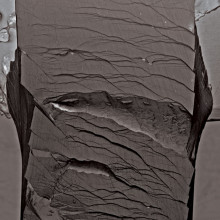
14:16 - Tough metallic glasses
Tough metallic glasses
Tougher glasses have been developed than ever before
Metals are wonderful material and have revolutionised human life. They are all crystalline which means that their atoms are arranged in repeating patterns over a relatively large scale, but they are not nearly as strong or stiff as you would expect from the bonds between the atoms. One of the reasons for this is that tiny defects in the crystals can move through the crystal relatively easily allowing the crystal to deform at much lower forces than you would otherwise expect.
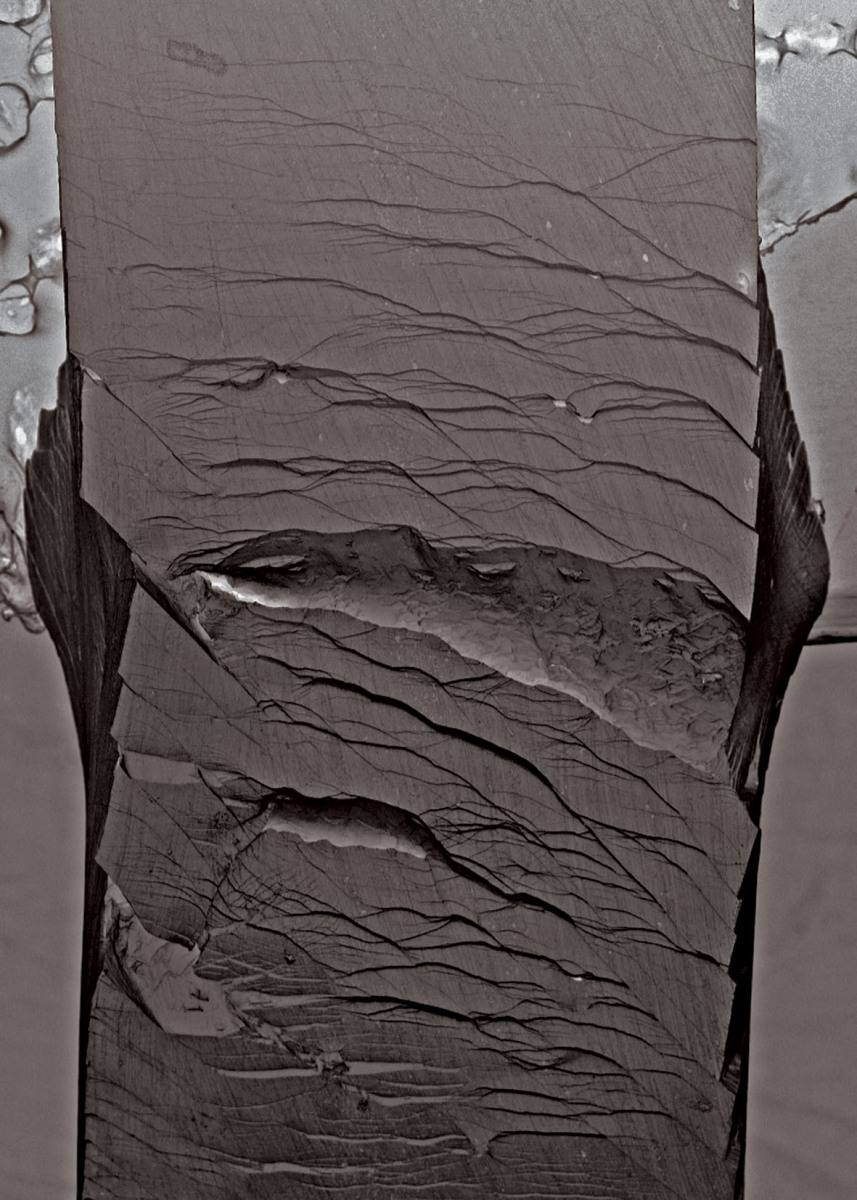 One way of making the metal stronger and harder is to make a glass with no large scale structure. When metals are molten their atoms are arranged randomly so if you can cool them quickly enough they won't crystallise especially if you are using a complex alloy with lots of different sizes of atoms. These are very hard and wear resistant, and very efficiently elastic, but the are not tough because unlike a normal metal they can't absorb energy in an impact by deforming, so cracks can pass through them very easily like normal glass.
One way of making the metal stronger and harder is to make a glass with no large scale structure. When metals are molten their atoms are arranged randomly so if you can cool them quickly enough they won't crystallise especially if you are using a complex alloy with lots of different sizes of atoms. These are very hard and wear resistant, and very efficiently elastic, but the are not tough because unlike a normal metal they can't absorb energy in an impact by deforming, so cracks can pass through them very easily like normal glass.
Marios D. Demetriou and collegues from the California Institute of Technology have managed to greatly increase their toughness by making a glass involving a palladium alloy, this made the glass much better at deforming slightly under large shear forces. This means that at the front of a crack the glass distorts slightly blunting the crack instead of making the crack longer. This has produced a material that is both stronger and tougher than any other metal.
It does however have the problem that Palladium is much rarer than Gold and costs about $16000 per kilogram, so it is unlikely to be used for anything very large. But the group is now working on alloys with similar properties which are a bit cheaper.
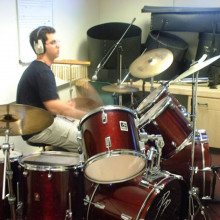
17:00 - Letting the Drummer Set the Pace
Letting the Drummer Set the Pace
with Andrew Robertson, Queen Mary University of London
Chris - Now traditionally, the drummer in a band is there to set and to maintain the pace of the music. But if pre-recorded samples and backing tracks are included in the performance instead the drummer now has to try and keep time with them. Now though, a new computer programme, which has been developed by a musician and researcher, Dr. Andrew Robertson at Queen Mary University of London could hand control back to the drummer. To tell us more here is Jane Reck from the EPSRC.
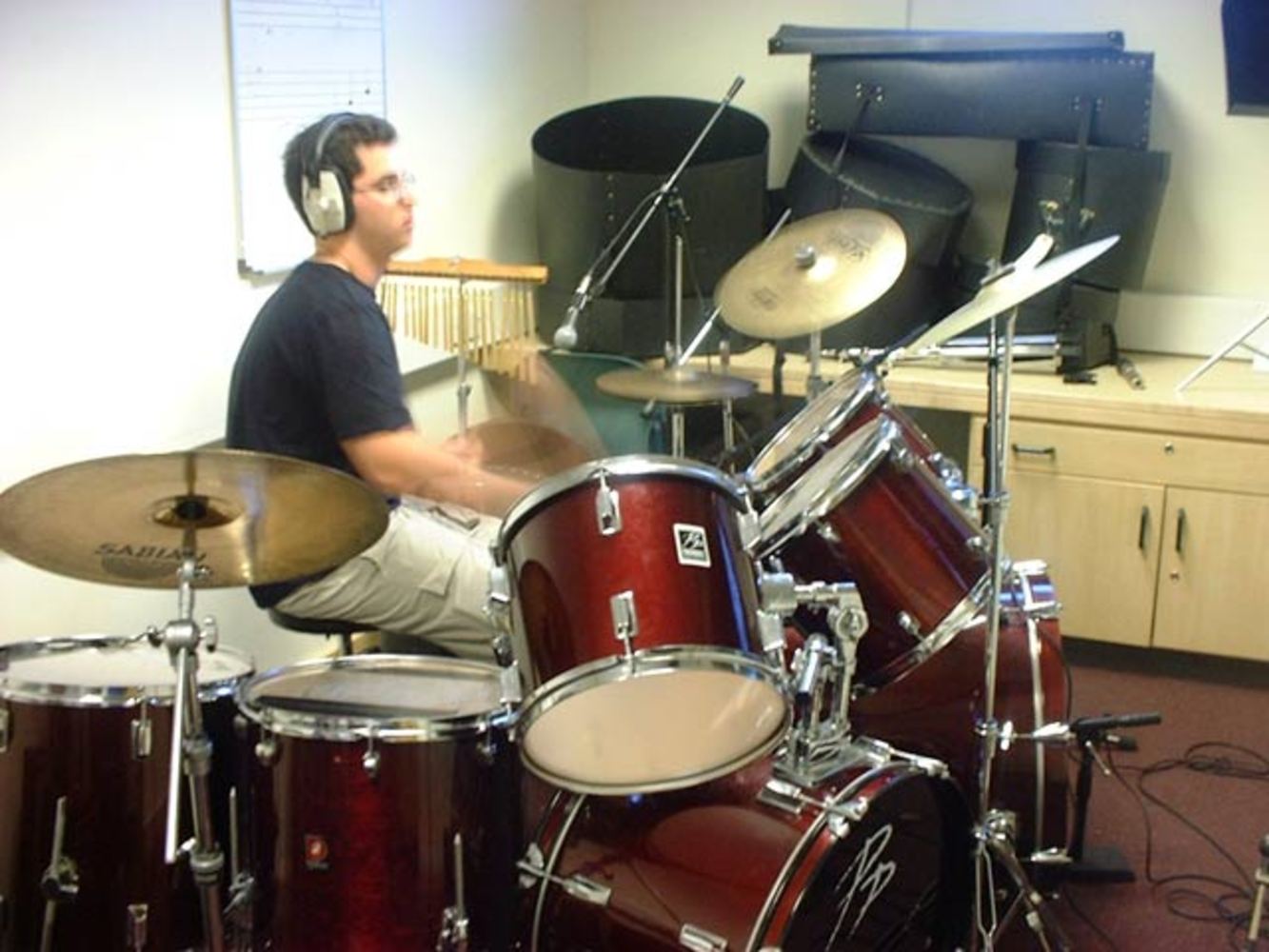 Jane - Like a lot of bands, Dr. Andrew Robertson's group uses a mix of live performance with pre-recorded backing tracks and synthesisers. But Andrew's band is different because he's made it possible for the drummer to set the pace of the music. If the drummer wants things to speed up or slow down, everything else follows the pace they set.
Jane - Like a lot of bands, Dr. Andrew Robertson's group uses a mix of live performance with pre-recorded backing tracks and synthesisers. But Andrew's band is different because he's made it possible for the drummer to set the pace of the music. If the drummer wants things to speed up or slow down, everything else follows the pace they set.
Andrew - I designed a drum tracking system that's called B-keeper to take in microphone input from the drums and to control sequencers in terms of their tempo to stay in time even though there are slight fluctuations in tempo. One analogy is, if you're on a motorbike, and you are on a motorway, and you're trying to catch up with a car that's ahead of you, all you have to do on the motorbike is accelerate. Then as you're approaching the car, you need to actually go off a bit, and sort of slightly slow down from the speed you are at, so that you're exactly the same speed as the car, and that you're at the same side of the car. You know, you look to your right, and there's the driver's seat. So, you're trying to be at the same speed and actually at the right place as well. There's no point being at the right speed and being half a beat ahead of the car. I see the drummer as the car. He's kind of just cruising along and the system is effectively more of the motorbike because it actually has the ability to zoom up and catch up, or put on the brake and slow down slightly. So, I've made that system for music.
Jane - Andrew is a researcher at Queen Mary University of London. He says it's the first software of its type for drummers. The drums are linked up to the computer software by microphones.
Andrew - We just pop a mic in the kick and one in the snare put it out to this computer. This is analysed for something called onset detection. So, when they hit that drum, you get an event and it's sent to you as a bang or it's a hit. So it's analysing a sequence of events. This is done relative to a click track that the sequencer's using. The computer uses its metronome. It's got its own idea of bars and beats, of what it's doing. So you send out on the one hand, the computer's click, on the other, the kick and the snare from the drummer. The software is making the best adjustment to align the two, so the best adjustment in tempo, so you're at the same speed and the same exact place as the drummer. It's also got a nice count-in where you can count in with the sticks and that initialises it ready to go.
(Music)
Jane - This is the drummer playing live with backing from a synthesised baseline. As the music progresses, a robotic xylophone is also brought in. The software controls the speed of the baseline and the xylophone to keep up with the drummer. You'll hear different parts of this track so that by the end of the piece, when the drummer has gradually built up to a much quicker speed, you'll be able to hear a real difference in the tempo with everything, following the lead of the drummer.
(Music)
Jane - So the music goes from this to this...
(Music)
Jane - And finally, to this....
(Music)
Jane - Drummer David Knox says the software makes a big difference to a performance.
David - It's something that I can interact with. So, this computer responds to me like another musician. I interact with it as I do with the bassist and the keyboardist, and the singer. In a live situation, if the audience is enjoying it and I'm enjoying myself, and there's a buzz going on, I can go there. I can speed up. I might find that this chorus, I really want to kind of give it a bit of extra energy, and I know the machines there. I go for it, it listens and away we go, you know.
Jane - Andrew's work is funded by the Engineering and Physical Sciences Research Council and the Royal Academy of Engineering. So it's UK-funded research that's helping to keep this country ahead of the game in the music industry. Nowadays, a lot of musicians make more money from live performances than music sales. So Andrew says it's vital that these musicians are able to offer more spontaneity in their performances to keep people coming back for more.
Andrew - It's very difficult for musicians to actually sell hard copies of their records, so they don't see the kind of revenue they used to see when they had the vinyl and CD sales. Actually, it's in the live arena that a lot of things are happening. Given that, when you look at the bands out there that are exciting, a lot of them are using technology. They're bringing technology into the shows. If bands take this up and start using it, I think they benefit from it.
Jane - You can find out more about the software at B-keeper.org and Andrew's band is called Higamos Hogamos.
(Music)
Chris - What a fantastic invention. That was Jane Reck from the EPSRC and she was talking to Dr. Andrew Robertson from Queen Mary University of London. And if you'd like to catch up on anything we've covered so far this week, the references and the transcripts for each of the news stories we've discussed are online at thenakedscientists.com/news.
How much CO2 does a car contribute?
Chris - Okay, well that's a really interesting question Alan, and I'm very glad that you raised it. So, the best way of approaching this is to think about the chemistry that's going on. So what's the chemical formula of the reaction in your engine between the fuel and the air. Well the fuel is a hydrocarbon and that means it's long chains of carbon atoms all glued together, and to make things simple, we'll assume that each carbon atom is associated with two hydrogen atoms because that's what a hydrocarbon chain looks like. So, CH2, the hydrocarbon, plus oxygen O2, and we're going to need two molecules of oxygen, is going to make a molecule of CO2 and a water molecule because the product of combustion is carbon dioxide and water. Now if we look at how much a molecule of the hydrocarbon weighs, for each CH2, that's 12 grams of carbon and H2 weighs 2. So we'll say that it's 14 grams for each mole or each group of molecules for the hydrocarbon, and the CO2 weighs 44. So therefore, the proportion of the products, CO2, that is the hydrocarbon to start with is 14 over 44. So if we ask Dave, he's got his calculator ready. Dave, what is 14 divided by 44, please?
Dave - Just below a third.
Chris - In other words, what comes out of the exhaust pipes is about three times the mass of the equivalent fuel that it took to make that in the first place. So, if we now go back to your original figures where you say that the gallon of the fuel weighs about 3,300 grams and that actually, after you've done a gallon's worth of mileage, you reckon you've produced 11,227 grams, what's the reason for the disparity? Well if we times the about 3 times 3,300, if you could just do this, Dave. So what does that come to?
Dave - It comes out as about 10,400 grams.
Chris - So therefore, we're almost in the right ballpark for the 11,000-ish that you quote in your car's figures. So actually, the reason for the disparity is that you forgot to take into account that oxygen weighs something and therefore, CO2 is actually a lot heavier than the original carbon that went in to make the fuel work in the first place?
Alan - What's coming out of the exhaust is not all that harmful then apart from the CO2.
Chris - Well you say apart from the CO2, but that's the bulk of what comes out unfortunately and if you look at the planet as a whole, burning fossil fuels has contributed an enormous amount. We put out something like 40 billion tons of carbon dioxide into the atmosphere every year. That's about 12 billion tons of raw carbon going into the atmosphere and this is fossilled carbon that was locked away, millions of years ago and turned into oil and coal. As a result, your contributing to the CO2 in the atmosphere which we think is linked to a rise in atmospheric temperatures because of greenhouse effect, and this will warm up the planet over time. The levels in the last 200 years have gone up by 30%, so you know, that's not bad for a single species to have altered the composition of the atmosphere of a whole planet by 30% for one gas in 200 years. It's pretty good going actually, in terms of an achievement from mankind, not necessarily a good one.
Will gritted roads hurt wildlife?
Sarah - Well of course, because we have had to put rather a lot of salt and grit out in the roads with our sort of rather glacial winter this year. Well it's kind of a difficult question to answer because obviously, when the snow melts, it'll dissolve the salt and the salt will get washed away. So if it gets washed into something like a lake or a river, it can build up. And if you imagine what that's going to do to the wildlife in the river, it's a bit like dropping a freshwater fish into seawater, and they're not adapted to live in saltwater, so that could cause some serious issues. In terms of the animals that might happen upon the salt when it's on the road, obviously, I don't know if you have a heart to put salt out, stop slugs eating your lettuces or any of your things in your garden, Chris?
Chris - I use beer, actually.
Sarah - Yes, I've heard that that's supposed to work quite well. Well if you put salt on a slug or a snail, they sort of go all frothy and it's a bit of a cruel way to kill them. So they'll obviously have problems, but with larger animals like foxes and rabbits, although eating a lot of salt could make them quite sick, it's unlikely that they'd be able to ingest that much. A couple of studies actually that came out in the last couple of years, one from the University of Minnesota and one from the University of Toronto Scarborough, found that salt from roads in those local areas had actually contaminated local water supplies, and the Toronto study also showed that wildlife have been affected because they sort of decrease in fish in local creeks, and a decrease in aquatic species diversity. But there is a key point here that our roads are designed to drain into drains. So when the snow melts if it's on the roads, it will drain into drainage and go to a water treatment plant. So in theory, it shouldn't cause too much problems unless you use a lot of it and then it gets washed into standing water. So, it could cause problems, but no one's quite sure.
Chris - Or back into the sea or coast as many of those stone drains go into the sea at the coast, don't they? So that's quite handy because the salt just goes back to where it came from in the first place really.
Sarah - Well yes, I suppose. It's still the most cost effective way of dealing with ice and snow, and you know, people have still got to get to work and drive to school.

Do surgical implants attract lightning?
Dave - The answer is yes, but only a very, very little bit. Okay, lightning is very, very highly charged. This charge will attempt to flow down to the ground. The problem is air is an insulator so it's got to flow through something. The way you can get electricity to flow through air, so that the voltage gets big enough, is if the electric field gets big enough, you can rip electrons off the air, they can then fly through the air and bash other electrons off. You've got a big conducting path which electricity can flow down. It's a bit like a wire and the lightning bolt can go down through this path. The air gets very hot, and you get thunder and lightning. The shorter this path has to be, the better the conductivity route up before the lightning has to start, the easier it is for lightning to form. Lightning tends to strike the lightning rod before it will strike something below the lightning rod because it is an easy path to get to Earth. So you're friend would be an ever so slightly better route for the lightning to go than you are because she's got this big metal rod down her back. Actually, compared to air, you're a very, very good path, so it's going to be a trivial difference and if she actually had a big sharp, pointy thing coming out of the top of her head, that might have more of an effect but I very much doubt that she has.
Chris - Because lightning conductors don't actually protect a building by attracting lightning. They actually deflect the lightning around the building by effectively creating a sort of shield or coronal discharge of electrons flowing around the building and that provides a lower resistance route to ground for the lightning.
Dave - Yeah, they do two things. One of them is that they are a good path. If lightning is going to hit the building, it'll hit the lightning rods, and therefore, the building will not catch fire, and the second one is that they can essentially discharge the lightning in that general area, they discharge and so it's less likely to strike in that area. But the radio thing I think is quite likely because essentially, she does have a great big piece of metal in her back, a big piece of metal that acts like an aerial and can reflect radio waves, and do all sorts of strange things to it, in the same ways you can to a slightly lesser extent. So yes, I'm sure she does affect that.
Chris - Don't let her come around my house then because I have a terrible job picking up anything where I live.
Dave - She might improve it.
Chris - She may improve it even? Oh well, okay then I'll plug her in.
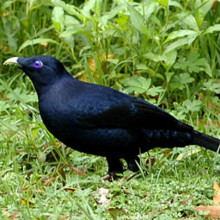
31:52 - Planet Earth - Bower Bird Mimicry
Planet Earth - Bower Bird Mimicry
with Laura Kelley, University of Edinburgh
Sarah - It's time for this week's Planet Earth and Richard Hollingham has been to Edinburgh Zoo to speak to Edinburgh University researcher, Laura Kelley, who studies Bower birds. These are natives of Australia and Papua New Guinea. They look a little bit like a cross between a crow and a pigeon, and they build impressive Bowers to attract mates. But it also turns out that they are highly impressive mimics...
Laura - The species I work on are spotted Bower birds. They build a long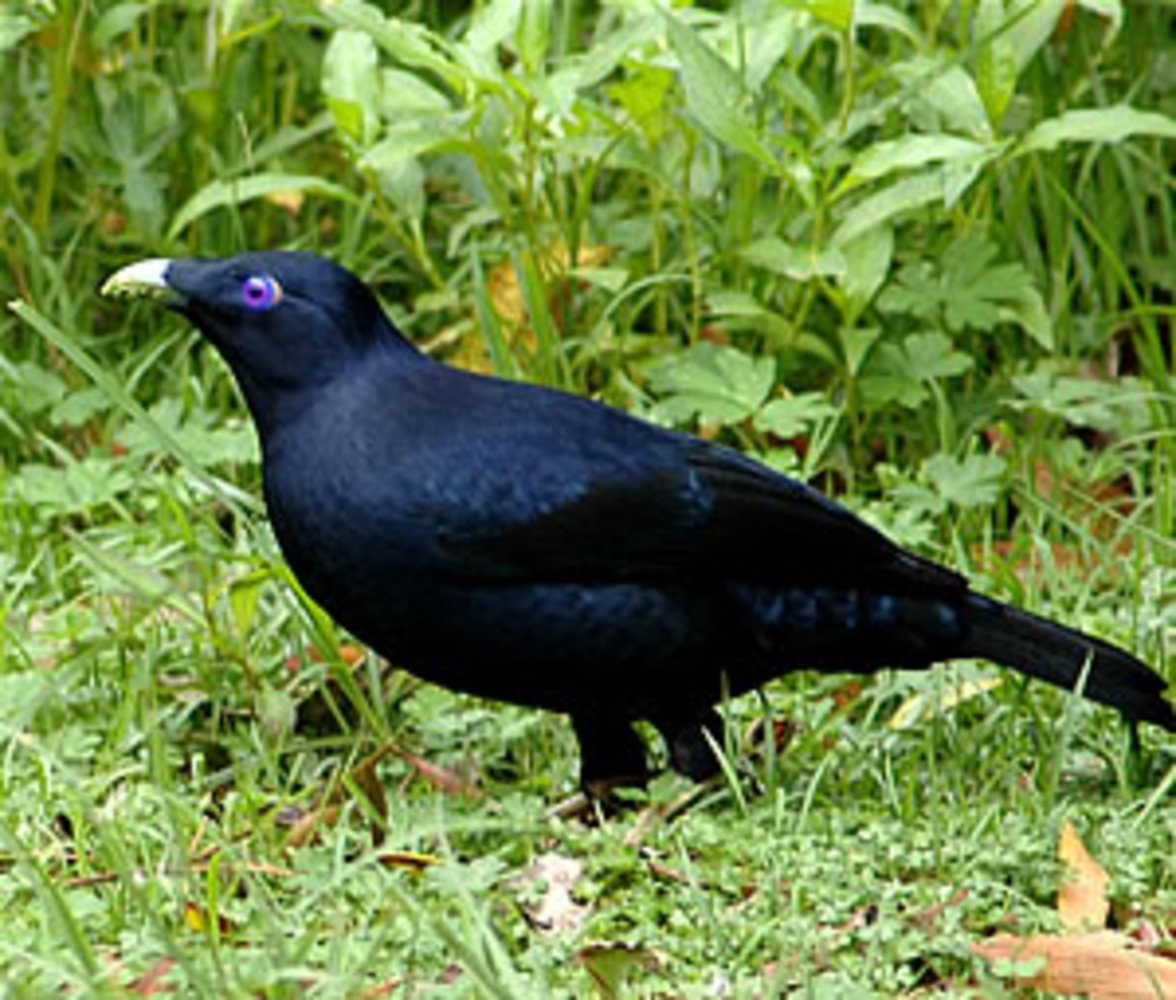 U-shaped Bower. It's about 50 centimetres long and they construct that out of a stick base and then they put grass pieces along the side of the Bower, and then in the middle of this Bower, they put pieces of green glass and clear glass, and then they have a big pile of snail shells at either end.
U-shaped Bower. It's about 50 centimetres long and they construct that out of a stick base and then they put grass pieces along the side of the Bower, and then in the middle of this Bower, they put pieces of green glass and clear glass, and then they have a big pile of snail shells at either end.
Richard - And it's not just that, they also mimic other birds and other animals, other things in the world?
Laura - They mimic up to 14 bird species that we've got recordings of. They definitely mimic a wide variety of sounds and as you mentioned, environmental sounds including people.
Richard - Well let's talk about that mimicry because that's what you've been looking at. I hope it can hear some of these, but first of all, this is what a Bower bird would normally sound like.
Richard - So almost like a hiss-like sound.
Laura - Yeah, it's a very harsh broadband kind of hissing sound and all the Bower birds produce quite a similar kind of harsh sound, and this is the vocalisation that they use when they're communicating with each other.
Richard - But they can also produce the sounds of other birds. This is a kite for instance. This is a real kite.
Richard - But this one is a Bower bird mimicking a kite.
Richard - It's really difficult to tell the difference.
Laura - Yeah, it's very easy to be fooled by them actually, so when we were looking at mimicry, we only classified it as mimicry if we could actually see the bird producing the sound because it is, as you say, very, very accurate.
Richard - But, it's not because other birds that they can mimic?
Laura - They also mimic environmental sounds, so there's reports of them mimicking the sound of dripping water, and twanging fence wire, wings flapping, and also people. I've got a recording of a Bower bird or two Bower birds in fact that mimic a lady calling for her cat, which is called Bonny.
Richard - That's amazing.
Richard - How long did it take for the Bower birds to get that?
Laura - Well, the lady has owned the cat for less than a year, so they picked up in under a year. The lady also calls for the cat at least once a day. So they've only probably had one or two exposures to it daily and then they've picked it up in under a year, so they can obviously learn them moderately quickly.
Richard - And how common is this for Bower birds?
Laura - As far as we know, all Bower bird species mimic. To what extent they all mimic, we're not entirely sure because many of them are in remote locations, we don't always know as much about them as we would like to.
Richard - What do you think is going on here?
Laura - Well, it's not entirely clear to us why this particular species mimics. So, in some of the Bower bird species, they mimic as part of their sexual display. So as well as building their impressive Bowers, they also produce mimicry of other species to attract a lady. With this particular species that I work on, the spotted Bower bird, it could be that they mimic aggressive and predatory species as a way of deterring either potential predators or rival Bower birds. The other thing that it could be is that the sounds that the males mimic are all quite simple and they're very common and loud in the general sound environment. So it could just be they're almost learning these sounds by mistake because they're simple and very loud.
Richard - So they could just be going on anyway and the fact is that there's no disadvantage to the mimicking, rather than there being an evolutionary advantage.
Laura - Exactly, yeah.
Sarah - Laura Kelley from the University of Edinburgh, talking to Planet Earth podcast presenter, Richard Hollingham. And you can download the latest Planet Earth podcast and find links to its host website, Planet Earth Online at the nakedscientists.com/planetearth.
How is cerebrospinal fluid pressure controlled?
Chris - Your brain and spinal cord sit inside your skull and the cavity that runs down inside your spinal column, and they're invested in some layers called the meninges which wrap up the brain and spinal cord. Inside those layers is a fluid called cerebrospinal fluid, and the brain bops around in that fluid. It effectively acts as a cushion to support the tissue because the nerves in the brain are very delicate and they need that additional cushioning support. The cerebrospinal fluid is actually made right inside the brain. You have a network of blood vessels called the choroid plexus and those blood vessels work rather like a coffee filter. The blood goes through them and the walls are slightly leaky, so liquid, but not cells, comes out of the blood and goes inside some holes in the brain called ventricles. This liquid flows out of those ventricles and then out into the space around the brain. Right at the top of your head, between the two hemispheres is a structure called the falx cerebri and in there is a very large blood vessel called the sagittal sinus. The dura, which is one of the layers of the meninges, makes that special blood vessel and it's perforated in various places by these structures called arachnoid granulations. These are little pouchings, that are mushroom shaped, of the additional layer around the brain, the arachnoid layer around the brain, and the CSF goes up into those little mushroom-shaped bodies, and is re-absorbed into the blood stream via that route. So blood comes out of the middle of the brain, goes around the brain, and then is re-absorbed into this big blood vessel that runs from front to back in the middle of your head. The reason that the pressure can go up is if those arachnoid granulations get blocked or if that big blood vessel, the sagittal sinus, gets blocked and sometimes if too much CSF is produced as well for whatever reason. You can lower the pressure by treating the underlying condition whatever has caused the obstruction, or by reducing the formation of the cerebrospinal fluid in the first place. And one way to do that is to give a drug called a carbonic anhydrase inhibitor. I think one of those is a drug called acetazolamide and this will reduce the rate at which CSF is being formed and therefore, the CSF pressure drops a little bit.

Do large eyes see better than small ones?
Sarah - Well, I think the idea behind it is you want to get as much light onto your retina as you can, so you can get a more detailed picture of the outside world. So you often see large eyes in nocturnal animals that rely on sight, things like aye-ayes and bush babies, or fish, or indeed cephalopods like giant squid in the deep sea where it's constantly dark.
So, either they can be predators and they need to see their prey, or they need to be determining distances to jump between branches, that sort of thing.
It's not necessarily just a question of how big the eye is, but you also need to think about what you're doing with it.
So, if you have a large pupil, you'll need to have a larger eye or a deeper eye in order to get the focus depth right. Because if you have a big aperture and you just let the light into the eye, then you need to make sure that it's deep enough in order for you to get the focal length, otherwise you'll have a big blurry picture.
So, you still need to have the focusing power of a lens going on there. If you can't focus the light, it's quite useless.
Also things with bigger eyes that need to see more often have a larger optic lobe in their brain because they need more processing power, and that sort of thing. Now, this is just the case for simple eyes here, we're not talking about compound eyes which are the sort of things that invertebrates like insects and crustaceans have. Although I do know that mantis shrimps have the most complex eyes of any invertebrate and they have 16 different types of light receptors, whereas we only have four!
Is gravity getting stronger?
Chris - I know that the consensus of opinion for the amount of mass descending onto Earth from space annually is now about 40,000 tonnes or the weight of a modest aircraft carrier every single year. The Earth is 4,500 million years old and we'll assume that it's been roughly the same ever since because otherwise, we're going to get tied up into all kinds of knots. So what is 4,500 million times 40,000?
Dave - It comes out roughly about 160 million billion tonnes.
Chris - It's quite a lot, isn't it?
Dave - It's an awful lot compared to us and it's quite a lot compared to anything we might come across. However, the Earth itself weighs about 6 million trillion tonnes, so it's only one 10 millionth of the mass of the Earth.
Chris - So in the grand scheme of things, it's trivial.
Dave - Yes, if the rate of stuff falling down had been constant all the way through the Earth's life. However, that obviously isn't the case because the Earth was formed by stuff crashing into it and coagulating in the form of a big lump from lots and lots of meteorite type things. So, the assumptions we've made are completely wrong and in fact, the whole of the Earth's mass has come from meteorites.
Chris - ...and stuff accreting, you're right because if you take it to its logical conclusion, the Earth came from particles falling together, so you could say, well 100% of the gravity of the Earth is because of stuff raining on to the Earth effectively.
Why is frost bad for a freezer?
Dave - The problem is, because it's a good insulator. The way a freezer works, you have a load of pipes at the back, you compress a gas in the pump, that makes it hot and loses the heat out of the back of the fridge or freezer. It then pipes this condensed, compressed room temperature gas into the freezer, it then expands, evaporates, gets cold, and so the coldest bits of the fridge are where this expanded gas is flowing through. The problem is that wants to get the heat from the fridge, but if you've got a great big layer of ice, that's going to insulate the cooling part of the fridge from the contents of your fridge, so the fridge is going to be warmer, which means that the actual fridge-freezer is going to work harder to keep cold, which means it gets even colder, it means you get more ice that will build up so it'll go horribly wrong until the fridge just conks out.
Chris - And you have a big bill.
How was the first organic molecule made?
Chris - I presume, he means in space with the evolution of the Universe or at least let's assume that's what he means because that's kind of interesting. Well this was a question that scientists struggled with for a very long time, including quite a famous scientist Stanley Miller who did the really famous Miller experiments in the 1950s, '60s, '70s. And one of the things that he was intrigued by is the possibility that the complex life on Earth all arose from building blocks that were built up to make complex chemicals in situ here on the Earth in the early days of the planet's history. And he did a very exciting experiment and Ben Valsler and I went to the University of California, San Diego to meet Jeff Bader who worked with Stanley Miller and has all of his equipment and in fact, all of the results of his experiments which he found in a laboratory at Stanley Miller's laboratory when he cleared out when Stanley Miller died. That experiment consisted of taking a glass flask, putting in a source of hydrogen and carbon, and a source of nitrogen and some water, and mixing up those gases in the absence of oxygen in this flask, and heating it up to a very high temperature so it boiled off and then passing the vapours past a spark created between two electrodes. He ran this thing for about a week or so and what started off as a clear fluid in the bottom of the flask soon became chocolatey-brown. And when he analysed the products, he found at least 20 different chemicals. When Jeff Bader re-analysed all of the chemicals that were in there about 20 years later using a mass spectrometer and very modern techniques, he found there were hundreds of complex organic chemicals in this mixture. So, in terms of the early Earth and probably the early Universe, what this experiment suggests is that you can make quite complicated, quite big molecules including the building blocks of life, amino acids, by recreating these conditions and having a source of energy, ionising radiation perhaps, and all those key molecules, and you can then get some exciting chemistry happening which will produce a range of different things. So I think basically, it's not that difficult is what this is saying.
Dave - Yes, since then people have found these complicated organic molecules all over the Universe. They found them in meteorites, they've found evidence for them in big molecular clouds floating out in space as you huge clouds which are mostly made up of ethanol out there, which will be an alcoholic's paradise. So basically, all you need is some of the right kind of elements: some carbon, some oxygen, some nitrogen and some hydrogen, and something of about the right temperature, and some - as Chris was saying a source of energy, some ultraviolet light kicking about, not too much, just the right amount. And so, the first time in the Universe history when that's going to have been common is after there has been some big supernovae, because supernovae make the heavier elements. Before then, it was mostly hydrogen. There might been a few created just from the Big Bang, but the numbers will have been absolutely minute. So you just need some supernovae to have gone bang and then stars starting up from their remnants. So a couple of billion years after the Big Bang and I'm sure there were lots and lots of organic molecules kicking about.
Sarah - And of course, I suppose by organic here, we don't mean sort of like the organic vegetables that you find in your supermarket and haven't been grown with pesticides. We just mean molecules that have carbon in them.
Dave - Yes and of course, obviously, the simplest organic molecule is something like methane with just some carbon and some hydrogen in it.
What would happen to the bubbles in a fizzy drink at zero-g?
Chris - That's a really interesting point. What would happen if you took your Coke Zero into zero gravity? It is Coke that makes Zero, I think, isn't it? I hope it is. Anyway, the answer is that when we're on Earth and you crack into a can of drink, it fizzes up because the bubbles know what is up and what is down because there is a density gradient in the fluid. The bubbles are less dense than the liquid because they take up much more space than they actually weigh, and as a result they are pushed to the top of the fluid - they float. Now if you're in space, there is no up and down because there is no gradient like that in the same way, so if you do actually produce a fizzy drink or some froth in space, what happens is the bubbles just sit there, interestingly. Scientists have done this, from NASA; they actually took some Alka-Seltzers to the International Space Station and dissolved them in some water inside a plastic bag, so they could see what the bubbles did. And you get a range of bubbles of different sizes; and what happens is you get a small bubble formed because it is easier for a small bubble to make a bigger bubble so all the small bubbles join in and they tend to coalesce, and you get a range of bubbles but they are all fairly large. But they remain static in three dimensional space so you just have this bag of fluid with bubbles perched all over the place in it, not glued to the side, but actually inside in the body of the fluid so the bubbles basically won't float like they do on Earth.
Dave - So, I guess it's very like what happens if you shake it up and let it expand very, very quickly. You just get a big foam. Chris - Yeah you do, and it looks quite nice. You can look on the internet actually and see pictures of froth in space and you'll see all these frothy "rafts" if you like. It's quite striking. Quite an interesting experiment - I'm glad that NASA are spending lots of money on doing important things like fizzy drink research. No I'm just kidding it certainly had me glued, anyway.
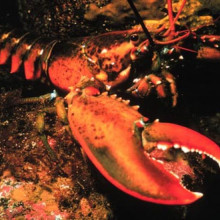
Can a lobster drown?
Sarah Castor-Perry dipped her toe int this question...
Sarah - The simple answer is no. Lobsters have evolved to live in water. They exchange gases through their gills and they will actually die if they are out of water for too long, but they will actually survive for a small amount of time. Their close relatives, crabs, can actually survive out of water for a bit longer, although if you take a fish out of water, it will die because it will essentially suffocate. When they're in water, their gills extract oxygen from the water, but when you take them out, the surface tension of the water makes the gills collapse, so they can't function, they can't get the oxygen out of the water.
Now some fish do actually have adaptations for air breathing, like lung fish, if they live in places like rivers that periodically dry up they need to be able to deal with that. The reason that crabs, and to a certain extent lobsters but not as much as crabs, can actually survive in air for a time, is that they hold their gills in cavities on the undersides of their bodies. They don't actually breath air. They're still using their gills, but they've found a way of keeping them supported and moist, which is the most important thing.
There's actually a species of crab called a coconut crab and they've evolved something called a brancheostegal lung which is a spongy tissue, like a cross between gills and lungs, which still need to be kept moistened, but they will actually exchange gas with the air. Lobsters do also have gills in chambers, but they still require water. So they will survive in air as long as their gills are kept wet. They also have something called the gill bailer which has the best name - it's called a scaphognathite which helps to keep water moving across the gills. So, they will suffocate if they're on air, but they will not drown in water.
Why does a bump on the head make you see stars?
Chris - Yes. It's a cartoon cliché, isn't it? A cartoon character get socked around the head and then you see the stars going around their head. It's probably because you get two things happening:
One is that when you slam your head down against the ground or some hard object very quickly, you get what's called a contre-coup injury, because the brain bounces around inside your skull - because although it's cushioned by the cerebrospinal fluid, if it's travelling sufficiently fast there will still be a degree of shock in the brain. And if that impacts on the visual areas, then it triggers a bit of pressure to be applied to the visual nerves, or the nerves that present to consciousness the fact you're seeing something, and as a result they become active. If they're active, they're going to make you think you're seeing things that are not there, but they're not going to be built images because that involves whole assemblages in nerve cells. It'll just be random cells here and there and as a result, you see these little spots of light which we interpret as stars because that's the most sensible thing to say that they are. So it's probably a trauma thing. The other time you occasionally see stars is when you stand up too quick in the bath. This is a blood pressure hyperperfusion thing because when you're hot in the bath, all of your blood vessels dilate out to get as much blood as close to the skin surface as possible to cool you down. So when you stand up, you've got lots of blood in your peripheries, very little is actually returning to the heart and so, there's a drop in blood pressure, just transiently, and that impacts on the retina which has a very high metabolic rate. If you interrupt the blood flow, just for a fraction of a second to the retina, all of the nerve receptors in the eye that turn light waves into brainwaves just start firing off all kinds of visual signals and you see those starbursts, and that's probably the reason why. Sarah - Is that also a little bit like if you rub your eyes too hard and you start seeing little lights popping all over because the pressure in your eye is activating the photoreceptors? Chris - Absolutely. That's another entoptic phenomenon. If you press on the eye, you're deforming and distorting the retina, applying pressure to the photoreceptors. This could do two things. One, stimulate them in exactly the same way as you say. The other is it could just move them a fraction away from the blood for a fraction of a moment. That is enough to make them a little tiny bit oxygen-deprived and so they start also firing off these funny signals. So yes, you're on the right lines.
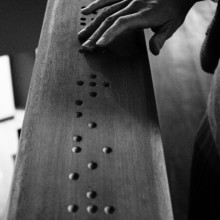
56:32 - How does the brain process Braille?
How does the brain process Braille?
We put this question to Dan Goldreich, associate professor in the Department of Psychology, Neuroscience & Behaviour at McMaster University in Ontario, Canada... Dan: - So, to answer your question, we need to understand how the brain processes both touch and language. With respect to touch, when we move our fingertip over objects such as Braille characters, receptors under the skin produce electrical impulses that race at about 50 meters per second through the nervous system and up towards the brain. This pattern of electrical impulses, a sort of neural Morse code, activates a part of the brain's parietal lobe - roughly halfway between the forehead and the back of the head. This tactile area of the parietal lobe helps to decode the neural impulses, in order to infer the shapes of the objects that touched the skin.
Now, interestingly, in blind people, particularly those blind from birth, touch activates not only this tactile area of the parietal lobe, but also a part of the occipital lobe, in the very back of the head, that is normally reserved for vision. A blind person reading Braille, then, will experience activation of both the tactile area of the brain and the normally visual area of the brain. This unusually extensive brain activation may underlie the heightened sense of touch in blind people. However, in reading Braille, the brain must not only perceive the shapes of the characters, but once it has done so it must understand those shapes as language. This linguistic understanding is probably not occurring in the brain areas I've just mentioned, but rather in the brain's language areas (such as the area of the temporal lobe - above the ear - called Wernicke's area). So a blind person reading Braille is probably using the same language areas of the brain as a sighted person would while reading print, and as you are right now as you understand the words that I'm speaking.
So, "Does the mind process text in a different way when reading Braille?" the answer to the question is both yes and no. Blind people reading Braille do show an unusually extensive pattern of brain activation but, once the brain perceives the tactile shapes, the subsequently activated brain language areas used to understand the Braille words are probably the same as those used to understand printed or spoken words.
*Finger size can also affect tactile acuity: Journal of Neuroscience Dec., 2009: Peters RM, Hackeman E, Goldreich D (2009) Diminutive digits discern delicate details: fingertip size and the sexdifference in tactile spatial acuity. J Neurosci 29: 15756 -15761.
How does energy consumption of fluorescent light bulbs differ?
Dave - The efficacy of a light bulb is a measure of how much visible light they produce per watt. So, an old fashioned fluorescent is somewhere between 50 and 67 lumens per watt whereas a compact fluorescent is between 60 and 72. So it's similar, but possibly slightly better because the compact fluorescents are newer.
- Previous Feeding the World in 2050
- Next To Pee, or not to Pee?











Comments
Add a comment